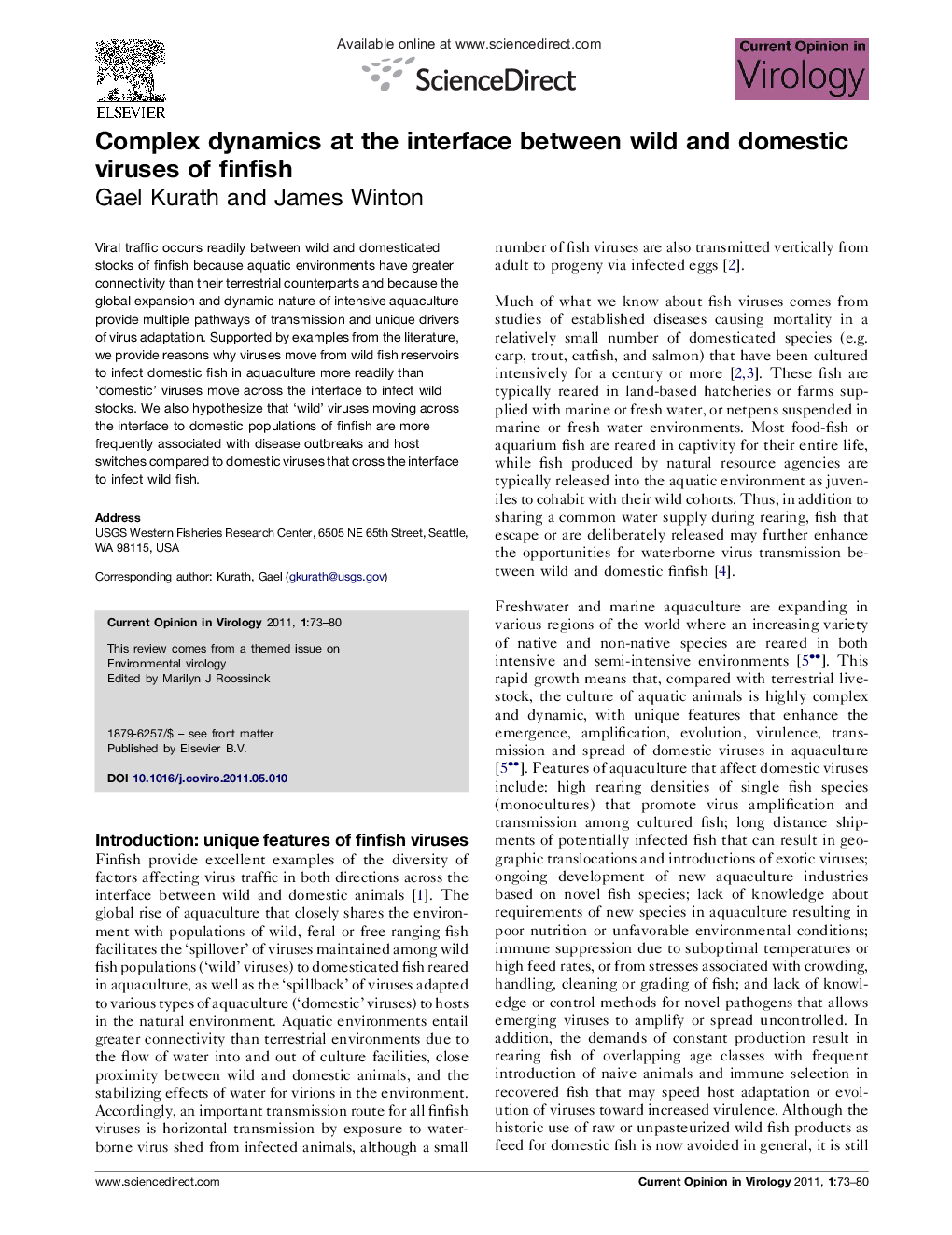| Article ID | Journal | Published Year | Pages | File Type |
|---|---|---|---|---|
| 2473488 | Current Opinion in Virology | 2011 | 8 Pages |
Viral traffic occurs readily between wild and domesticated stocks of finfish because aquatic environments have greater connectivity than their terrestrial counterparts and because the global expansion and dynamic nature of intensive aquaculture provide multiple pathways of transmission and unique drivers of virus adaptation. Supported by examples from the literature, we provide reasons why viruses move from wild fish reservoirs to infect domestic fish in aquaculture more readily than ‘domestic’ viruses move across the interface to infect wild stocks. We also hypothesize that ‘wild’ viruses moving across the interface to domestic populations of finfish are more frequently associated with disease outbreaks and host switches compared to domestic viruses that cross the interface to infect wild fish.
► The global expansion and dynamic nature of aquaculture provide complex viral transmission mechanisms and unique drivers of viral adaptation. ► Evidence suggests wild to domestic fish viral traffic is more significant in terms of disease than domestic to wild transmission. ► Viral hemorrhagic septicemia virus (VHSV) illustrates complex traffic across the wild to domestic interface and host switches into rainbow trout. ► Transmission of wild fish viruses into domestic fish can be associated with host switches and virus adaptation to higher virulence.
